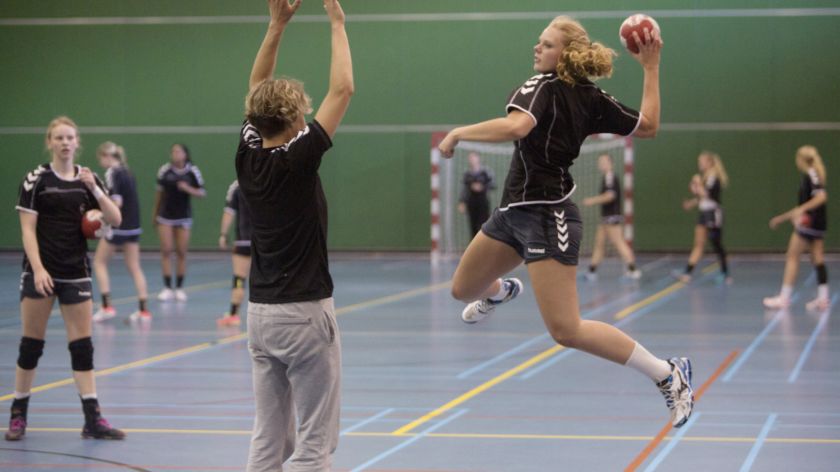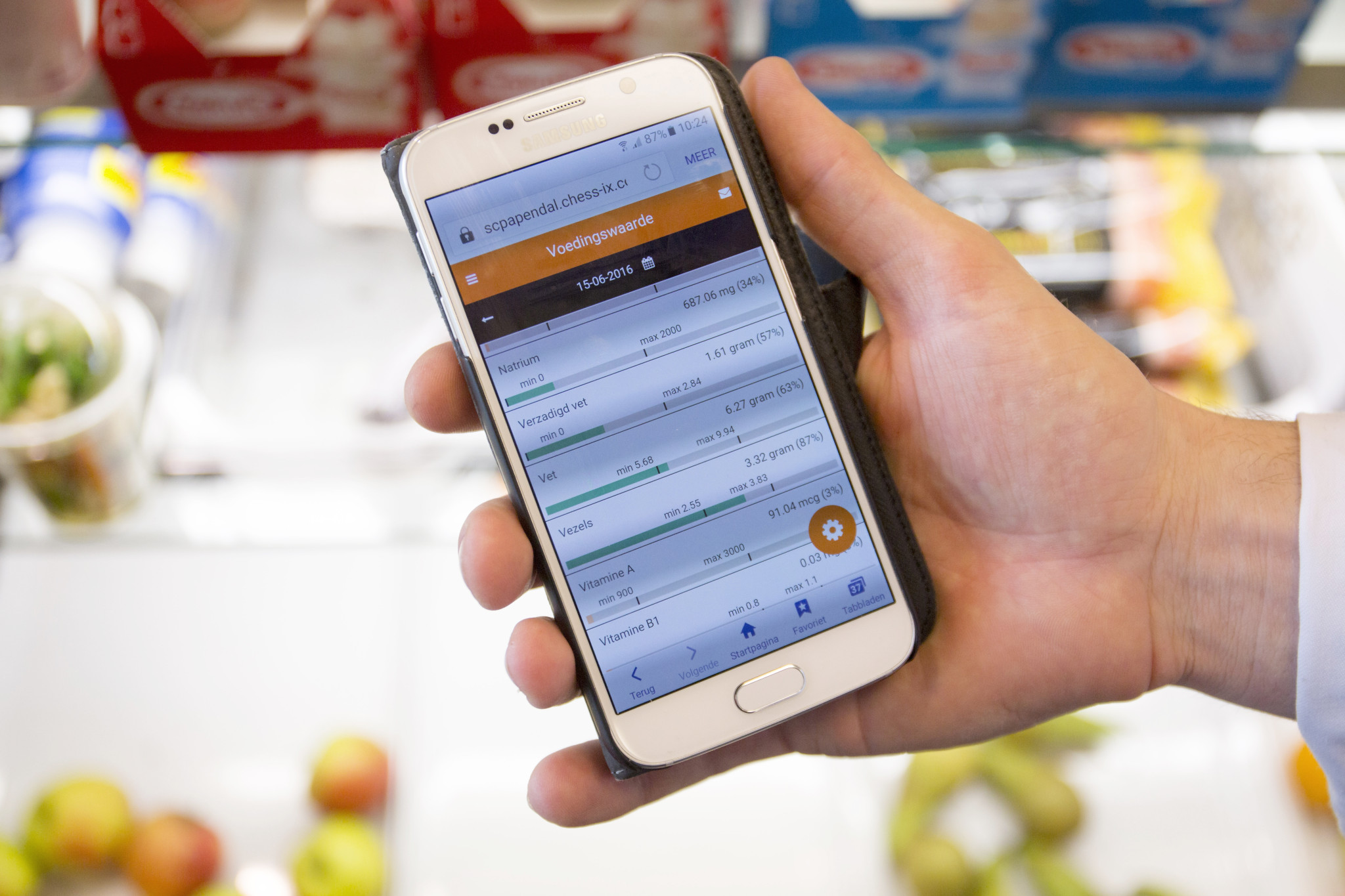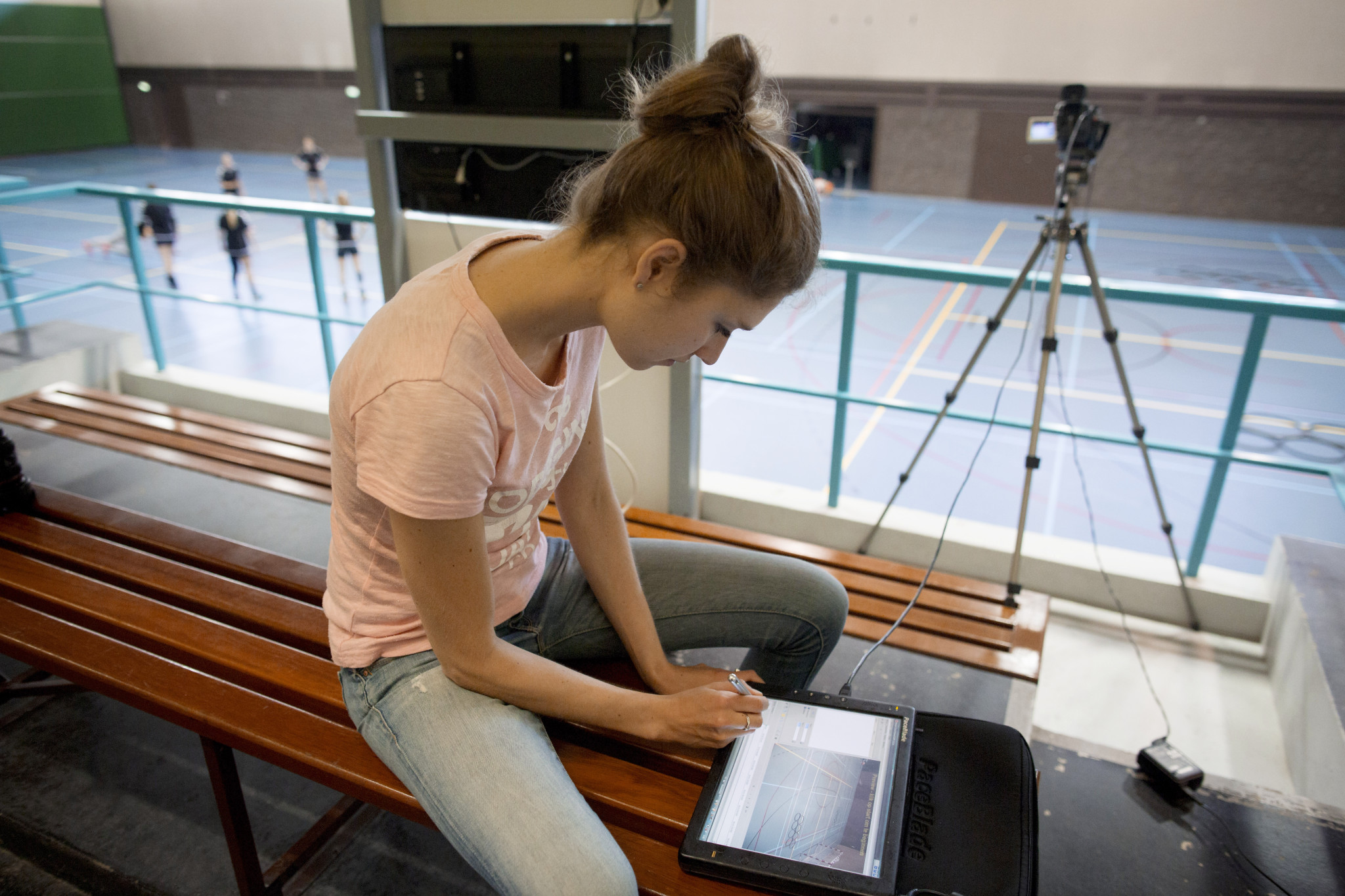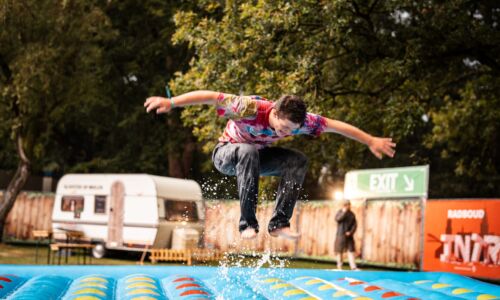To measure is to know (and to sweat): how technology is transforming sports
-
 Danique Boonkamp in action. Photos: Erik van 't Hullenaar
Danique Boonkamp in action. Photos: Erik van 't Hullenaar
Top handball player and student Danique Boonkamp uses apps, camera systems and heart rate monitors to find out more about herself. But also ‘regular’ athletes at the Radboud Sports Centre are increasingly relying on technology. How is technology transforming sports?
In the Papendal handball hall you can hear the squeaking of shoes. The coach’s loud instructions to his team echo through the room while the players take turns sprinting up to the goal, jumping forward from the half-circle line and, just before touching the ground, throwing the ball with full force in the direction of the goal.
The High Performance Centre (Centrum voor Topsport en Onderwijs, CTO) is an initiative of the national Dutch sports federation NOC*NSF. It offers top athletes aged fifteen and up the opportunity to combine studies or school with their sport. Papendal is one of the four CTO locations in the Netherlands and it is home to 350 young top athletes, all of whom have a room at Papendal. Five of them, including Danique Boonkamp, study at Radboud University. Danique has lived at Papendal since her fifteenth birthday, and before her studies she attended a secondary school in Arnhem.
Papendal is the beating heart of Dutch Olympic sports. As we enter the grounds on this Wednesday morning, we can hardly miss the digital count-down board proclaiming: ’51 days to Rio’. In the woods surrounding Arnhem, over one hundred Dutch Olympic athletes are preparing for the greatest sporting event in the world, while dozens of athletes are also preparing to travel to Brazil for the Paralympics in September.
For Danique Boonkamp (19), the Rio Olympics are as yet too ambitious a goal. But what takes place in the handball hall certainly qualifies as sports at the highest level: the majority of these young women are members of the Jong Oranje team. For the past four years Danique has lived in Papendal, where she is enrolled in the High Performance Centre (Centrum voor Topsport en Onderwijs (CTO, see box)). From time to time, when the programme allows it, Danique travels to Nijmegen where she also studies Pedagogical Sciences at Radboud University.
‘It’s true that I often have to miss lectures,’ she says after training. ‘But it’s important to have a degree. Handball is not something you can do for the rest of your life. But right now, sport does come first.’
Control room
And what better place to live than Papendal, where athletes can mingle with the many researchers ready to take them under their wing? In a kind of control room next to the grandstand, Sophie Hamers keeps her eye on the two screens in front of her. One of them shows a two-dimensional handball court, with small circles moving over the court. ‘These circles are the players. I can follow live how they move across the court.’
Hamers is a Master’s student in Sport Science at the University of Groningen currently following an internship at Papendal. She collects data about training sessions. The program she uses maps the precise location of the players on the court. ‘It’s very useful because it gives the trainer a very precise overview of the positional play.’
Each player’s position is registered using a measuring vest. In addition all players wear a heart rate monitor. Immediately after training, before their sweat has had time to dry off, Boonkamp and her teammates receive an e-mail from Hamers. This e-mail contains all kinds of information, such as the distance they covered, the number of sprints they ran, and their heart rate during training. Team averages are also included so that players can compare their performance with the rest of the team.
‘It’s interesting,’ says Boonkamp. ‘But mostly it’s really useful to our trainer. He can see exactly how heavy the training was for each player. If we all had to push ourselves to our limit, he knows he will have to adjust the next day’s training. Our individual strength training sessions are also adjusted in response to physical measurements.’
At Papendal, the trainer has even more facilities at his disposal: the hall is also equipped with a number of cameras, allowing the trainer to later review any moment of the training. One of the cameras is constantly aimed at the goal, and images are replayed in slow motion on a TV screen facing the court. After an offensive move, all a player has to do is step aside and they can immediately review their moves.
To measure is to know
In the hall, Boonkamp and her teammates’ performance is carefully monitored. But outside the sports hall too, to measure is to know. Boonkamp eats three times a day in Papendal’s Top Sports Restaurant. Every shake, apple, sandwich or hot meal she scans at the register counter is assessed for nutrients. Via a brand-new app developed by Papendal, athletes can keep track of how many minerals, vitamins and nutrients they consume.
‘We are obliged to eat at the canteen,’ says Boonkamp. ‘Every once in a while we go to a dietician who keeps track of our weight. If we are too heavy or too light, we are issued a diet.” This is very useful to top athletes, for whom performance is everything. But: “All the food here is super healthy. No sauces, no grease. Quite a change from what I used to eat at home.’

Boonkamp’s time at Papendal is soon coming to an end. She has been offered a contract in Melsungen, central Germany. ‘The club where I will be playing dropped down to third Bundeslinga this year, but they want to climb right back up into second division. I am supposed to help them achieve this.’ This will make it difficult for her to continue her studies in Nijmegen. ‘But I will certainly try. Luckily more and more lectures can be followed online.’
This article was published in Vox #2




